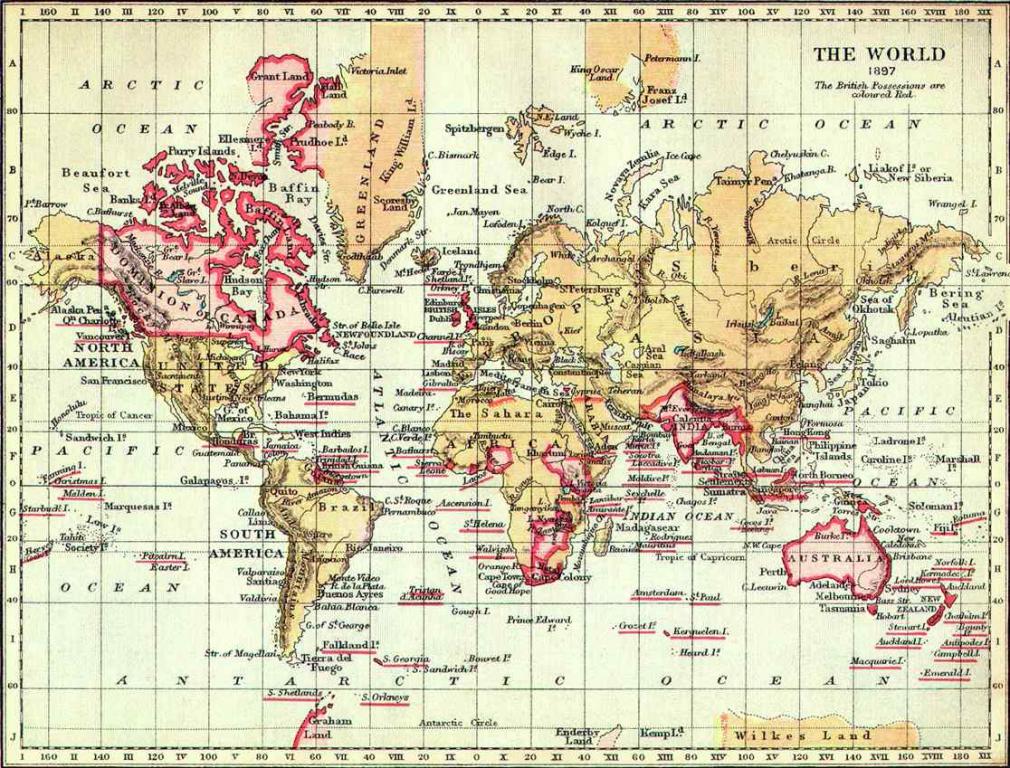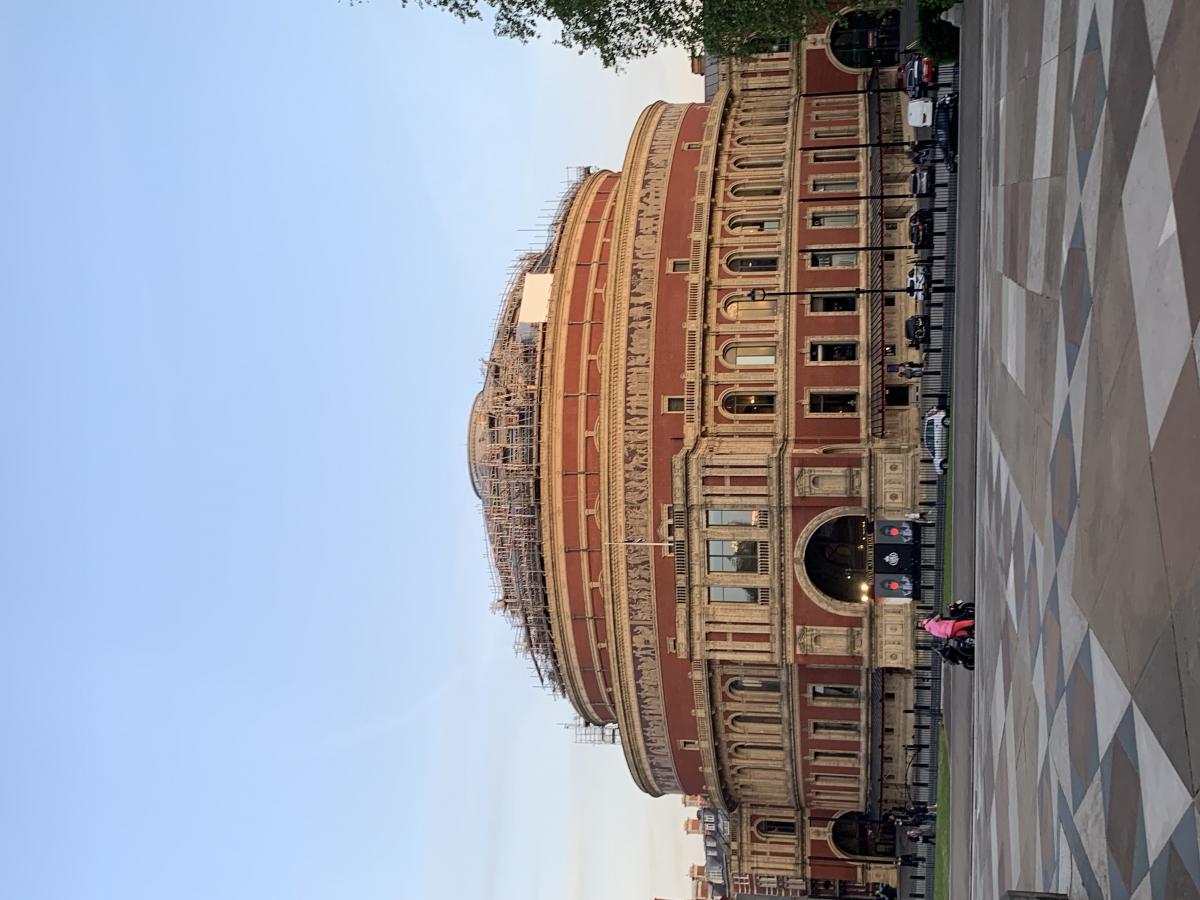As a class we will be using the resources of COVE to create a collaborative Digital Humanities project in which we plot the historical sites that inform and shape British literature and culture. Each of you will be responsible for choosing a historical location or site in Great Britain to research and add to our class map. Your contribution should provide a brief overview of a significant and interesting cultural or political event, as well as a brief reflection that connects that event to our course themes and texts. Each contribution should be approximately 300-500 words.
UVU London Literature Dashboard
Description

ENGL 2620: Home, City, Empire: Space and the Construction of British Literature, 1800-Present
Traditionally, literary canons are delimited by national borders. But national borders are not static; nor are the people who inhabit them. As the map above demonstrates, this is especially true in regard to British history. At one point, the British empire was so large that it was colloquially known as the empire on which the sun never sets. And yet, just a few years ago the country narrowly voted to leave the European Union, in part because many felt that the influence of other European countries and influx of other European nationals threatened to overrun British culture and identity. This is in keeping with global trends: nationalism, and the significance of nationality, are on the rise despite (or perhaps because) the internet has allowed us to connect in ways previously unimaginable. These developments raise questions about how we have demarcated literary canons in the past, and how we might approach this task in the future.
This survey course will examine the history of British literature after 1800 through the lens of space and place. Focusing on three spatial contexts closely associated with British culture: the home, the city (London, in particular), and the empire, we as a class will consider how literary representations of these overlapping spatial scales contribute to shifting conceptions of British identity, as well as intersect with the construction of gender, class, and race. In short, we will explore the relationship between space, literature, and identity. More generally, we will trace the evolution of societal norms and narrative styles over a period 200+ years and investigate how various authors have responded to issues surrounding British domesticity, urbanization and its ecological impacts, and imperial expansion.
The goals of this course are manifold. It will introduce you to a selection of major authors included within the British literary canon from Romantic, Victorian, Modern, and contemporary periods. It will invite you to explore historical contexts and it will also challenge you to develop your skills in literary analysis and academic composition.
Galleries, Timelines, and Maps
Individual Entries
I'm sure you passed this stunning hotel on our recent trip to the British Library, it was the giant monolith of gothic architecture whose clock tower stood tall over King's Cross Station. The history behind the Renaissance Hotel started with the railway. The Midland Railway company established a new station going into London and thus wanted a new place to house the huge influx of people coming into London. Thus the Renaissance Hotel was built by George GIlbert Scott, and although expensive the great hotel was finished at a cost of what would be 500 million pounds today. During its heyday the hotel became a hotspot for esteemed nobles and higher ups. The hotel then fell out of favor for its outdated interior amenities before it was picked back up in 2002 and turned into the St Pancras Renaissance Hotel it is today. The hotel becomes significant in our reading in that it shows the innovation at the time. Similar to the time period of Mrs Dalloway and a...
moreMy time in the United Kingdom has opened my eyes to many different forms of art and performance that I rarely experience in the states. Early on this trip I attended a show at a contemporary dance school called The Place. Like nearly all buildings in London, the structure that houses this dance school has a long and rich history. Originally built in 1889, the building was home to a drill-hall for training soldiers of the British military. Unfortunately, I was unable to find reliable resources about this particular drill hall, however, upon further research I found some interesting information about these types of buildings. According to the Drill Hall Register, drill halls were not just meant for training purposes, but also were well known and quite prominent in the early 19th century for their detailed architecture. Furthermore, as much as soldiers utilized drill halls for training and...
moreSt. Oswald's church is located in Grasmere and is an active Anglican parish Church. It is dedicated to the Saint Oswald and many claim he preached there as well. It was originally built in the 14th century but the present church is the fourth one to stand there. Inside the church, you can see many remnants of the previous buildings including a stone head. The only remains of the church during the 14th century are the tower, porch, and south wall. The tower was built from unhewn boulders and the clock is there to mark the Diamond Jubilee of Queen Victoria in 1897. It is most famously known for being the churchyard where William Wordsworth and many of his family are buried. One of the most interesting things about is the raised roof made of timber. There are two aisles that make up the church’s nave, north and south. Originally the north aisle wasn’t part of the original church and was a separate building until money was put to connect the two buildings by a third roof....
more
Royal Albert Hall is a memorial to the late Prince Consort Albert and husband to Queen Victoria. In 1851, there was a Great Exhibition where Albert saw the success and brought forward the idea for facilities for the benefit of the public which would be known as Albertopolis. The goal of these facilities would be to promote the arts and the sciences and the plans for it were approved quickly. Sadly, Albert died before he could see his vision come to life, but Victoria kept his idea going. In 1871, the Hall was completed and named Royal Albert Hall of Arts and Sciences. Once opened to the public, it became a great social scene for the time. Symphonies were held, operas sung, theater performed. It was a beautiful place to be and right across the street was the Albert Memorial. Over time, remodeling has been done to keep the structure sound for the times and to keep it in a safe state, but a lot of...
moreDiana Memorial Fountain, which is a tribute to the late Diana, Princess of Wales. This fountain was designed to celebrate Diana’s life and legacy as a member of the British royal family and was opened to the general public in July of 2004.
I first visited the memorial fountain last summer when visiting for the first time with a friend of mine. We spent a couple of hours admiring the architecture and the number of families coming to visit, spend time together, and just enjoy the space. The fountain has two sides of water flowing in one direction, so at the bottom of the fountain, the two flows clash together. I think everyone knows how much Princess Diana loved and admired not only her own children but children all over the world. When spending time at the fountain you can see the space is filled with young children in swimsuits or diapers enjoying their time in the water, having no care in the world.
Throughout our readings in this course, I’ve noticed a lot of themes,...
